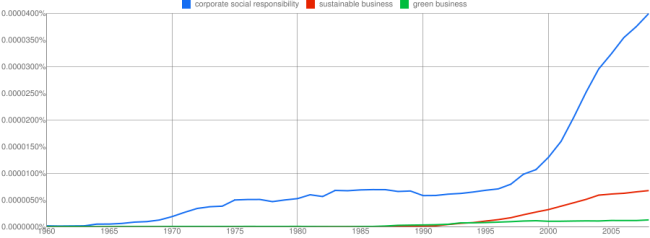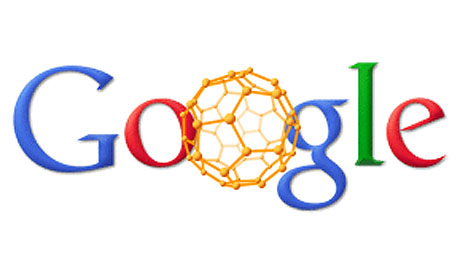This is, unfortunately, often true in Vermont as well. Perhaps it’s time to form a coalition of organizations to support a sustained campaign of what Richard Cialdini refers to as “persuasion psychology,” a.k.a., choice architecture or “nudges.” In any event, something must be done soon — we’re going no where fast on many of these issues.
words
Trending terms: Sustainable business, green business or CSR? Google Labs – Books Ngram Viewer
The delightful new Ngram Google Labs tool combines three of my favorite things: words, books and infographics. Here I’ve selected three terms — green biz, sustainable business and corporate social responsibility – to see which is the trending term in books over the past 50 years. Fascinating! (Who needs sudoku?) Check it out for your favorite words >> New Google Labs Ngram http://ow.ly/3r7KW
Windcuts: Amazing 3D Wooden Forms from Wind Movement Data

Windcuts [flickr.com] consists of various experiments that turn quantitative sensor data into visually compelling physical instantiations. Wind movement measurement data, such as wind direction, velocity and temperature, was used as the foundation to generate a 3D form, which was then physically drilled out of a piece of wood.
The direction of the physical line corresponds with the direction of the wind. The width and speed of movement reflects the wind speed. The temperature is mapped unto the height. The materials ‘surface plateau’ height represents zero degrees Celsius. So when the shape dips below the surface, it means the wind’s below zero degrees.
There’s something oddly compelling to me about the very idea of creating a 3D form, in wood no less, from data based on the seemingly ephemeral movement of air — also known as wind.
I see potential here for a wonderful educational tool. For those like myself, more comfortable with words than numbers in volume, these 3D forms bring to life otherwise fuzzy terms such as wind shear or turbulence. Makes me wonder if the climate change debate could have been shortened if displays like this were available for each physical effect discussed. Kudos to Information Graphics, and be sure to check out their other 3D representations.
Google doodle marks buckyball anniversary
This interactive doodle is just a bit of mental fun from Google, yet when the Guardian (U.K.) adds a solid back story, it becomes much more. It’s hard not to think of the millions of people, who like me, may otherwise never have heard of the ‘buckyball’ or as it is formally known, the buckminsterfullerene, a ‘specially shaped molecule composed entirely of carbon.’
Granted, my life and that of many others would have proceeded quite well without this factoid, yet it strikes me there’s more at play here than doodling. Arguably, the world is suffering in many ways because too many people understand too little about science, math and technology. In many instances, these applied fields are contributing to our problems, and yet they may offer our only solutions as well. Public conversations about both the problems we face, and the opportunities for solutions, are often made more difficult by this lack of a shared basic understanding of the principles involved.
So as a technology company with access to millions of us worldwide, Google’s choice to use its platform as an elegant canvas for advancing our molecular knowledge strikes me as corporate power well used. Kudos, Google.
A Building That Teaches Through Its Landscape – UVM in The Chronicle of Higher Education
As pleased as I was to see the new Jeffords building at the University of Vermont featured in The Chronicle of Higher Education, I must confess to being somewhat disappointed by this piece. Although Dean Tom Vogelmann appears amiable and approachable in the photograph above, the remaining photos do little to convey the “functional elegance” of the exterior or interior design of the new home for plant biology, soil sciences, and life sciences at UVM. The more important omissions to my mind, however, are details on the myriad steps and design choices made to enable a large building with teaching science labs to minimize its environmental footprint and to be potentially eligible for LEED gold certification. I yearned to know more about how that was accomplished. True, the teaching landscape featured in the article is interesting, yet I’ve begun to fear we fall further behind in the battle to minimize the effects of climate change whenever we miss an opportunity to inform and educate. I expected more from this publication.
Disclosure: I currently serve on the Board of Advisors for the UVM College of Agriculture & Life Sciences.



